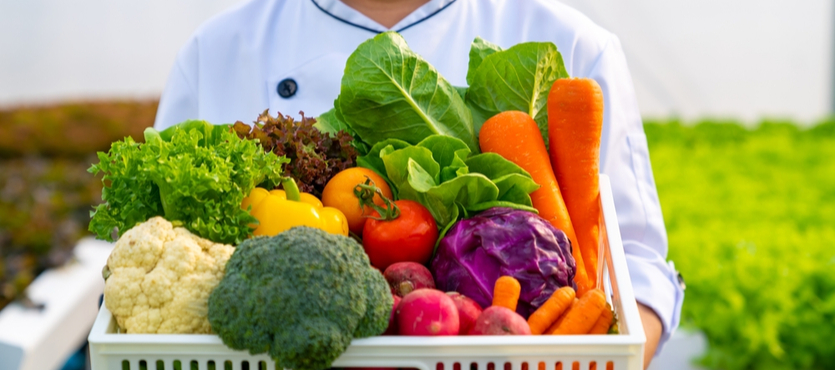Growing food for your restaurant in planters is an effective way to charm your clients with fresh flavors. And the presence of growing fruits, herbs, and veggies will satisfy their curiosity about the source of your food. To your kitchen staff, this is an opportunity to appreciate a constant supply of fresh produce.
Fortunately, growing food in planters is surprisingly simple. As such, you can run both your restaurant garden and exercise your culinary skills without feeling exhausted. Thanks to the relaxing effect of interacting with nature, you’ll gain both mental and physical health. With that said, here’re details on how restaurants can grow food in planters
- Choose the right planter
The success of your restaurant’s food garden starts with choosing the right planting container. While there are various options to choose from, adequate drainage must remain constant across. When choosing the planter, size plays a crucial role. And this is because some plants require enough room for root development. For best harvest, the planter must be at least 12” deep and 10” wide.
- Making or Buying your Potting Soil
Once you have the planters, the next step is getting the right potting mix. Will you make it or buy the potting soil? Well, it depends. If you are a starter in food growing then buying potting soil will be reliable.
It has the relevant conditions fit for specific plant types. Also, you have no experience on how to make potting soil that suits your plants. However, if you are an expert in this field, then you can make the potting soil instead of buying it.
- Choosing between Starter Plants or Growing from Seeds
Starting your food garden from starter plants or seeds has both pros and cons. Some plants do well in planters when you grow them from seeds. But they’re some which go through hardships to germinate, in that case, starter plants will do.
But before you decide to work on either, some background research on both options will be handy. Also, look into their pros and cons for better insight when deciding which one to work with.
- Potting
Whether it’s a starter plant or seedling, there’re essential guidelines to follow when potting them. For instance:
- Avoid packing the soil as you fill the planter. To settle the soil, gently tap the planter on the ground.
- Avoid overfilling the planter with soil. You should leave room for watering –about 2-3 inches of space is enough.
- And before you transplant your seedlings or starter plants, water the soil or pot mix adequately.
- And before transplanting, wet the plant’s root ball.
- Avoid planting the seedlings too deep into the soil. If possible, dig a sizable hole, enough to cover the root ball mildly at the top.
- Water your plant thoroughly after transplanting them
- Garden Location
With your plants in the planters, choose a location that fulfills individual plant sunlight needs. A bit of research will enable you to discover how much sunlight your plants need. But oftentimes, it’s about 6 hours of sunlight
- Garden Maintenance
For a healthy and successful garden, maintenance is essential. Whether it’s a fruit, herbs, or vegetable garden, constant maintenance is a must. And some of the vital maintenance practices include:
- Watering
- Nutrient feeding
- Mulching
- Disease and pest control
- Harvest
- Weeding
Final Take
Are you eager to start your restaurant food garden on planters? Well, contact TerraCast Products for amazing offering of resin planters. We offer a ton of styles, sizes and shapes that can help your restaurant get started growing your own garden. Most importantly, since our planter are constructed from high quality resins, they will basically last forever. Besides un matched functionality, we offer planters with amazing designs that can complement any restaurant’s aesthetics.
Please note that for the planter to be considered food-safe, it would need to be produced of a virgin LLDPE material. Some of our darker colors contain post-consumer recycled (PCR) which could contain some contaminants that would not be suitable for growing food. You just need to request that you planters are made in virgin material if you intend to use them for growing food.

